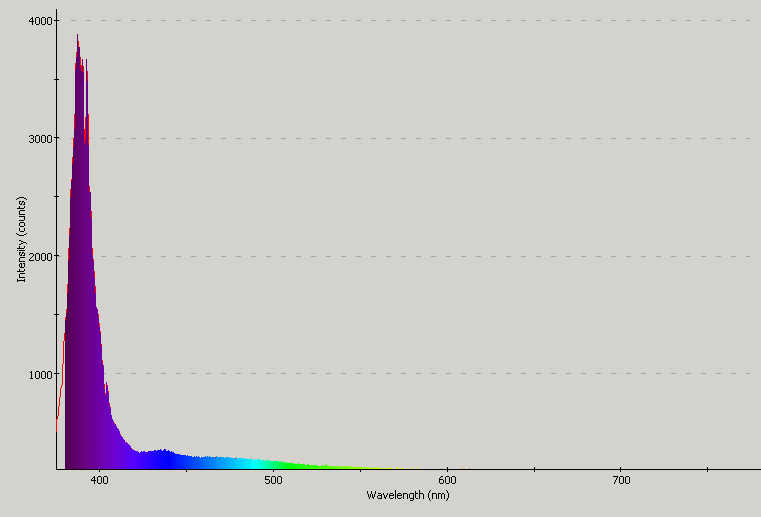jawnroot
Member
Ganja Pasha: I say the following with the best of possible intentions, so don't take it the wrong way. Again, though, I have nearly two decades of experience with bleeding-edge UVB and UVA technology, and the associated biological responses that these wavelengths encourage.
I'm of the opinion that you're oversimplifying the relationship between UVA and biological activity. There's often a tedency to think "Well, if I have X, and I have Y, then Z logically follows." With something as complex as plant functions, which are not close to being totally understood, making logical inductions is not always fruitful (no pun intended). However, testing theories is how we find out new things, and you seem very well read on the subject, so I applaud your experiments.
What you're referring to, the 390nm to 400nm rage, is more near visible than it is UVA. UVA goes down all the way to 315nm, and is broadly defined as 400nm down to 315nm (essentially the beginning of the visible light spectrum, right down to the threshold of UVB).
It's easy to look at spectrum charts, and conclude from them what a lamp will and will not produce. Spectrum charts can be misleading, and I maintain that UVA is produced in adequate levels from most any light source (whereas UVB is not produced in any measurable levels from common light sources) . To emphasize, UV is not used to any large degree for photosynthesis. That's why the PAR charts end at 400nm.
Rather, if UVA does anything at all, it catalyzes reactions that are already taking place. Thus, you do not need the ultra-watts of UV to produce a desired outcome, like you would with standard 400-700 nm light. Indeed, most average UVB emitting bulbs produce only 1 to 2 watts of total UV light.
All this said, I don't want to give the impression that I'm trying to start one of those forum "flame wars." Just a free exchange of ideas. I agree whole-heartedly that there are sources that produce much higher levels of UVA than what you'd find in an incandescent or HPS. Whether that additional UVA will have an impact on smell and taste seems dubious, but I encourage your efforts.
EDIT: The vast majority of UVB emitting bulbs also emit copious amounts of UVA, so as long as you're employing some type of UVB setup, you're guaranteed to get the UVA you want/need.
I'm of the opinion that you're oversimplifying the relationship between UVA and biological activity. There's often a tedency to think "Well, if I have X, and I have Y, then Z logically follows." With something as complex as plant functions, which are not close to being totally understood, making logical inductions is not always fruitful (no pun intended). However, testing theories is how we find out new things, and you seem very well read on the subject, so I applaud your experiments.
What you're referring to, the 390nm to 400nm rage, is more near visible than it is UVA. UVA goes down all the way to 315nm, and is broadly defined as 400nm down to 315nm (essentially the beginning of the visible light spectrum, right down to the threshold of UVB).
It's easy to look at spectrum charts, and conclude from them what a lamp will and will not produce. Spectrum charts can be misleading, and I maintain that UVA is produced in adequate levels from most any light source (whereas UVB is not produced in any measurable levels from common light sources) . To emphasize, UV is not used to any large degree for photosynthesis. That's why the PAR charts end at 400nm.
Rather, if UVA does anything at all, it catalyzes reactions that are already taking place. Thus, you do not need the ultra-watts of UV to produce a desired outcome, like you would with standard 400-700 nm light. Indeed, most average UVB emitting bulbs produce only 1 to 2 watts of total UV light.
All this said, I don't want to give the impression that I'm trying to start one of those forum "flame wars." Just a free exchange of ideas. I agree whole-heartedly that there are sources that produce much higher levels of UVA than what you'd find in an incandescent or HPS. Whether that additional UVA will have an impact on smell and taste seems dubious, but I encourage your efforts.
EDIT: The vast majority of UVB emitting bulbs also emit copious amounts of UVA, so as long as you're employing some type of UVB setup, you're guaranteed to get the UVA you want/need.
Last edited:









